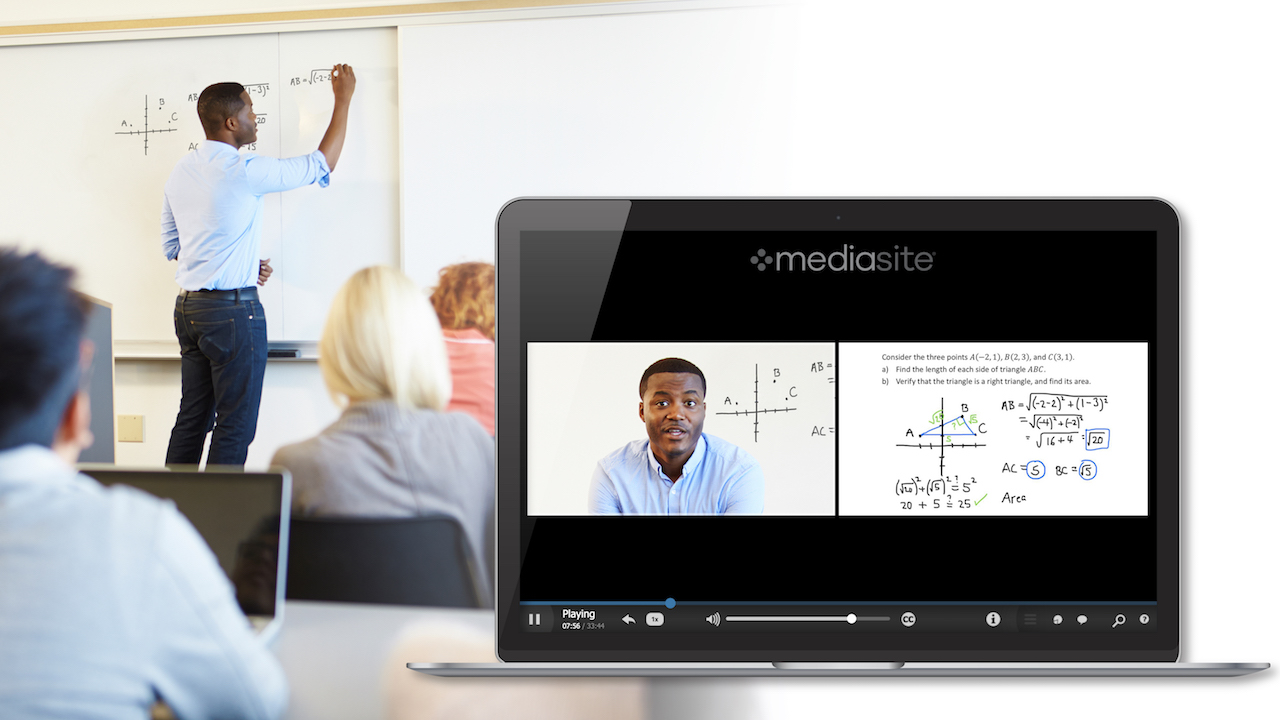The Critical Pivot from Classroom to Distance Learning
With shelter at home orders affecting organizations globally, learning and education professionals have quickly figured out how to move their programs online.

With shelter-at-home orders affecting organizations globally, including AVIXA and many of its members, learning and education professionals have quickly figured out how to move their programs online. Here are a few takeaways for educators and the AV professionals who support them that we’ve learned during this critical pivot from classroom to distance learning.
First, it is important to be clear about terminology. Distance learning is not just “online” learning, a format in which lessons are recorded and made available for students to consume at their own pace with no help from an instructor or interaction with other students. Distance learning means holding a live class with an instructor and a limited number of students at a specific time. Distance learning is an attempt to create something as close to a true classroom experience as possible, but without requiring participants to go to a specific location.
Both online and distance learning have a bad reputation with some in the learning community. Engagement and interactivity are pillars of modern instructional best practices; because those goals are not achieved by someone listening passively to a recorded lecture, some have discounted virtual learning. With recorded online lessons, there is no way to know if the student focused on the content or simply played the video in the background while focusing on something else. However, a well-designed distance learning setup can address some of those concerns, and even has advantages over in-person delivery.
[University AV in Uncertain Times]
In the best case scenario for a distance virtual learning, the instructor will broadcast from a classroom or studio environment designed specifically for that purpose, with a technology setup advanced enough that she can see all the students as clearly as if they were in the same room. Breakout rooms will be available for students to work collaboratively in smaller groups, and instructors will have access to real-time analytics about the engagement levels of every student in the class.
A major advantage of virtual over in-person learning is the ability to measure engagement. The instructor gets analytics about every student—the number of times they spoke, raised their hand, or answered poll questions. Another advantage: distance learning allows more students to join a course than would be able to attend in person.
The pivot to distance learning is about more than just figuring out the technology; lesson plans also must be adapted. AVIXA has moved several of its most popular AV training courses, like CTS Prep and Networked AV Systems, from a classroom to virtual delivery, and the association plans to move even more courses to virtual over the next few months. The AVIXA staff and volunteers working on these transitions have already learned valuable lessons along the way.
A daily selection of the top stories for AV integrators, resellers and consultants. Sign up below.
Amanda Beckner, former vice president of learning at AVIXA, said, “Our classroom-based lesson plans were designed as eight-hour days. It was not reasonable to expect someone to sit at a computer that long and focus on something.” The team reworked all the lesson plans into four-hour classes instead. The AVIXA distance courses employ Zoom breakout rooms for small-group work, where students collaborate to solve a problem. Slack channels and online community spaces give people a way to chat virtually during lunch breaks, helping satisfy the desire for community and camaraderie in group situations.
[The Technology Manager's Guide to Distance Learning and Streaming]
Bob Higginbotham, AVIXA’s director of technical training, explained that pre-planning and communication are even more essential when delivering virtually. Ice breaker activities are even more important in a virtual class than in an in-person one, and they require more planning. His biggest concern when AVIXA rolled out its first virtual course was whether his team had remembered to tell the instructors and students everything they needed to know.
Course materials are also a major consideration. Any item that would normally be handed physically to students in a classroom has to be replicated digitally. This task might be as simple as converting all workbooks into digital PDFs, or more complex, like researching a publicly available virtual calculator for the CTS Prep class to ensure it functions the same as the one students are provided when they sit for the CTS exam at a testing center. According to Higginbotham, there are already many apps and online tools that can replace physical supplies and instruments in the classroom. He expects that in the future, most classes will be making greater use of these tools.
Beckner’s team finds that technology is available that will reliably deliver a virtual class; the larger challenge is in adapting their training materials and instructional techniques to work well in that format. So far, their hard work has paid off in very positive evaluations from the first batch of distance learning students.
We’ve learned many things over the last few months. While not everyone has access to it yet, the technology exists to make distance learning an effective reality, but lesson plans must be adapted. It’s important to be prepared to go to a distance model. Even without the driving factor of a pandemic, there is an enormous opportunity to make educational opportunities available to more people than ever before through distance learning options, erasing some of the past geographic and financial barriers that have prevented some from receiving valuable training and education.
Allison Tardif serves as industry advocacy manager at AVIXA, the Audiovisual and Integrated Experience Association, where she leads AVIXA’s efforts and initiatives to raise awareness about the power of AV in dynamic markets such as higher education, design, transportation, sports, and hospitality.

